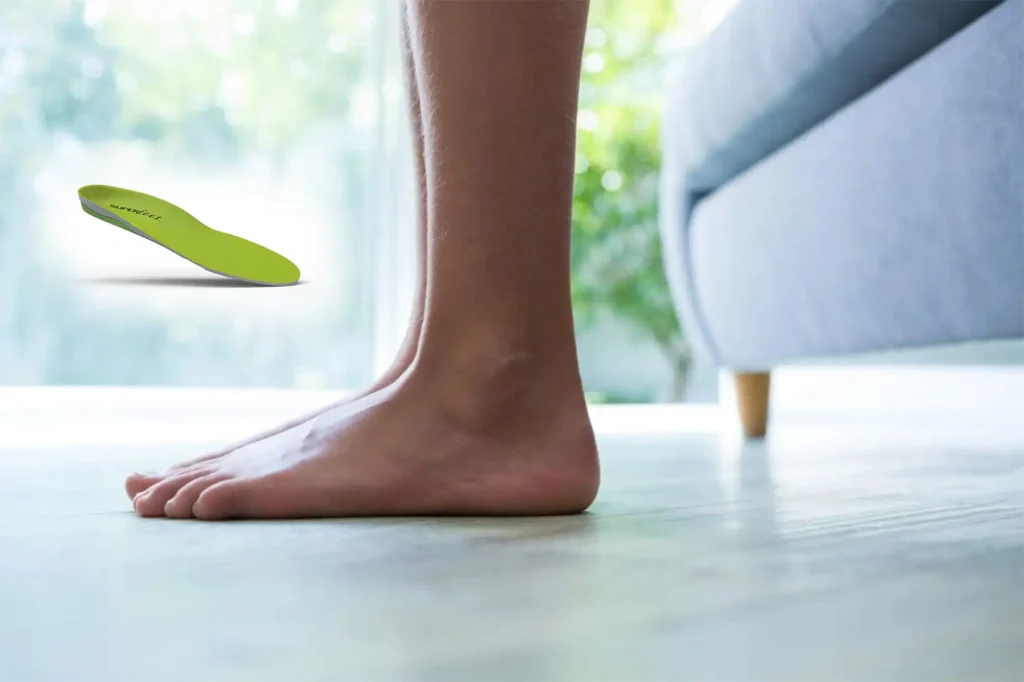With expert insights and real-life experience, this post is perfect for anyone seeking long-term relief from flat feet discomfort. Learn which materials and shoes work best and how to care for your insoles for lasting results.
Introduction to Heated Insole Shoes:
Flat feet also called fallen arches occur when the arches of your feet collapse, causing the entire sole to touch the ground. This condition can be inherited or develop over time due to age, weight gain, injury, or prolonged standing. While not everyone with flat feet experiences discomfort, many suffer from arch pain, heel soreness, ankle instability, or even knee and back problems.
This is where orthopedic insoles for flat feet step in (pun intended). Designed by podiatrists and foot specialists, these insoles help restore the natural arch, redistribute pressure, and support proper foot alignment. As someone who has lived with flat feet and tested countless products, I can tell you that choosing the right insole can make walking or standing for long hours feel effortless no more sore arches or burning heels at the end of the day!
Typically 6–12 months with regular use. Replace when cushioning fades or discomfort returns.
What Are Orthopedic Insoles for Flat Feet:
Orthopedic insoles are specially crafted footbeds designed to support abnormal foot structures. In the case of flat feet, these insoles typically feature.
- A built-in medial arch to support fallen arches.
- Deep heel cups to stabilize the rearfoot.
- Dual-layer cushioning to absorb shock during movement.
Unlike regular shoe inserts, orthopedic insoles are often made from firm but flexible materials like EVA foam, thermoplastic, or gel. They’re not just about cushioning they’re about correction. Many people with flat feet unknowingly walk with poor alignment, which can throw off the entire kinetic chain from foot to hip. Insoles help realign this system, reducing fatigue, strain, and the risk of long-term joint damage.

Benefits of Using Orthopedic Insoles for Flat Feet:
1. Pain Relief: The most immediate benefit is relief from foot and arch pain. A well-designed insole reduces pressure on sensitive areas and redistributes weight evenly.
2. Improved Posture & Balance: By supporting the arch and heel, orthopedic insoles promote better body alignment. This leads to improved balance, reduced overpronation, and less strain on ankles and knees.
3. Enhanced Mobility & Daily Comfort: Whether you’re on your feet all day or just enjoy weekend walks, the right insoles will make your movements smoother and more enjoyable.
In the long term, these insoles can also help prevent conditions like plantar fasciitis, shin splints, or even bunions. The key is consistent use and ensuring that your insoles are matched to your specific foot structure.
How to Choose the Best Orthopedic Insoles for Flat Feet:
Choosing the best orthopedic insole isn’t just about buying the most expensive brand it’s about understanding your unique foot needs. Here’s what to look for. Getting a gait analysis or consulting with a podiatrist is a great starting point. I personally use rigid arch support insoles for long workdays and more cushioned ones for daily wear they each serve their purpose beautifully.
- Arch Type Support: Not all flat feet are the same. Some have flexible arches; others are rigid. Look for insoles designed for your specific arch type.
- Material & Cushioning: EVA foam and gel offer great shock absorption, while harder plastics give firmer control. Choose based on your activity level and comfort preference.
- Fit: Some insoles are full-length, while others are 3/4 or heel-only. Make sure they fit snugly in your shoes without sliding or altering your gait.
- Activity Use: Running? Standing all day? Casual walking? Choose insoles designed for your main activity.
Best Shoes to Pair with Orthopedic Insoles:
Your orthopedic insoles are only as effective as the shoes you put them in. Wearing supportive footwear enhances the insole’s performance, helping you get maximum benefit. Brands like Brooks, ASICS, New Balance, and HOKA offer excellent choices for both casual and athletic needs. I recommend trying on shoes with your insoles before buying what feels good in theory doesn’t always match real-world comfort.
Look for shoes with:
- A firm midsole and good arch structure.
- A deep heel cup and a wide toe box.
- Removable footbeds (so you can insert your insoles easily).
Care & Maintenance of Orthopedic Insoles:
Orthopedic insoles are an investment in your health and like any investment, they need proper care. Here’s how to make them last. On average, quality insoles last about 6–12 months depending on usage. If you notice compressed cushioning, fading support, or discomfort returning, it’s time to replace them.
- Clean them regularly with a damp cloth and mild soap.
- Let them air dry completely before reinserting into your shoes.
- Rotate pairs if you use insoles in multiple shoes this helps reduce wear and tear.
When to See a Podiatrist:
While insoles help manage most mild to moderate flat foot issues, some cases require medical attention. You should see a podiatrist if. Custom orthotics may be needed for more severe cases. These are tailored to your exact foot structure and provide targeted correction that over-the-counter insoles can’t match.
- You’re still in pain after using insoles regularly.
- You experience numbness or swelling.
- Your foot deformity worsens or affects your gait significantly.
FAQ
Most frequent questions and answers
No, insoles don’t cure flat feet but they do correct alignment and relieve symptoms effectively.
Typically 6–12 months with regular use. Replace when cushioning fades or discomfort returns.
Over-the-counter insoles are available, but severe cases may benefit from custom orthotics via a podiatrist.
Conclusion:
Orthopedic insoles for flat feet are essential for correcting foot posture, easing arch pain, and preventing issues like overpronation and plantar fasciitis. In this detailed guide, we’ll explore how orthopedic insoles work, their top benefits, how to choose the best insole for your foot type, and when to see a podiatrist. With expert insights and real-life experience, this post is perfect for anyone seeking long-term relief from flat feet discomfort. Learn which materials and shoes work best and how to care for your insoles for lasting results.





